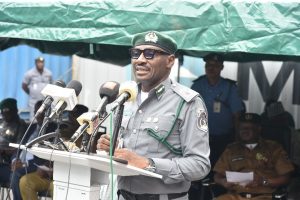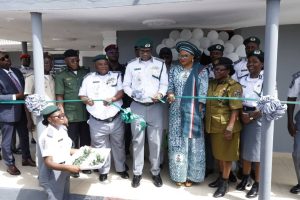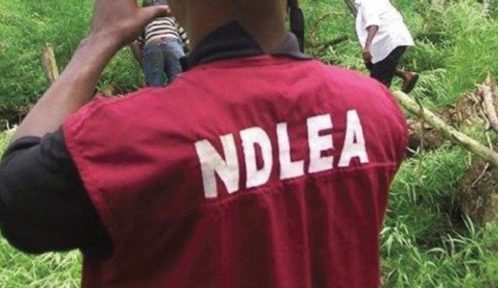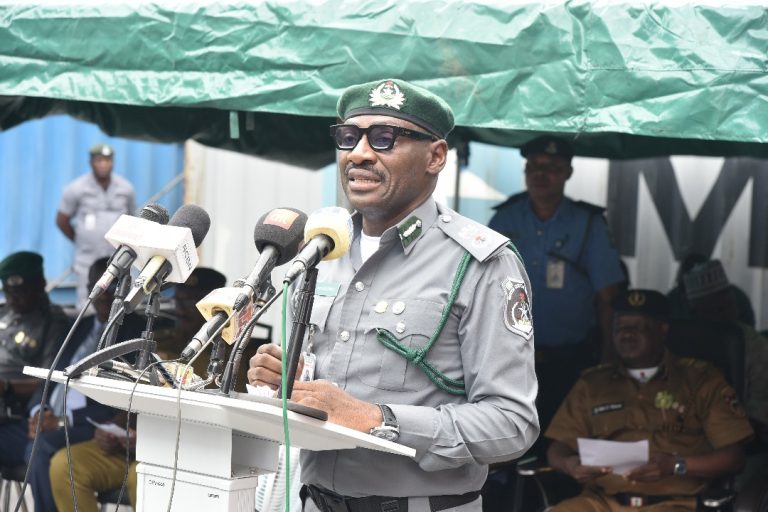…As Northwest Congo hospital receives new suspected Ebola case***
The World Health Organisation (WHO) says that with declining numbers and only a handful of confirmed cases reported in recent weeks, the critical phase of Nigeria’s largest Lassa fever outbreak is under control.
According to a statement issued by WHO’s Communication Officer, Ms Charity Warigon in Abuja on Friday, continued vigilance is, however, needed as the country is still Lassa fever endemic.
She said that this year, 423 confirmed cases, including 106 deaths, had been reported but that national case numbers had consistently declined in the past six weeks.
The spokeswoman said that the numbers had dropped below levels considered to be of national emergency when compared with data from previous outbreaks.
Warigon said that in the week ending May 6, only three new confirmed cases of Lassa fever were reported, stating that people could still be infected throughout the year hence the need for continued vigilance.
The UN agency congratulated Nigeria for reaching a milestone in the fight against Lassa fever but urged the country not to “let its foot off the pedal”.
It assured the Federal Government its continuous support in maintaining intensified response to the outbreak.
“WHO continues to help states that have reported new cases by strengthening their capacity to conduct disease surveillance, treat patients, implement infection prevention and control measures, laboratory diagnostics and engaging with communities.
“Communities are encouraged to remain vigilant and report any rumour to the nearest health facility because early diagnosis and treatment can save lives.
“Thirty-seven health workers have been infected with Lassa fever and eight have died.
“This highlights the need to implement standard infection prevention and control precautions with all patients regardless of their diagnosis.
“Health workers are urged to maintain a high index of suspicion for Lassa fever when handling patients with fever, headache, sore throat and general body weakness, especially when malaria has been ruled out with a Rapid Diagnostic Test.”
The world body also urged health workers to adhere to standard precautions by wearing protective equipment like gloves, face masks, face shields and aprons when handling suspected Lassa fever patients.
The News Agency of Nigeria (NAN) recalls that WHO in its Emergency Report, issued in April stated that in March less than 20 cases were reported each week while only five new cases were reported in the week ending April 15.
These figures, according to WHO compare with earlier reports issued in January, the beginning of the outbreak, to Feb. 18, when the number of weekly reported Lassa fever cases increased from 10 to 70.
In the meantime, the main hospital in Democratic Republic of Congo’s northwestern town of Bikoro has received a new suspected Ebola case, the hospital’s director told Reuters on Friday.
Bikoro is the nearest major town to Ikoko Impenge, the village where the first reports of the fever appeared.
Congo’s health minister on Thursday announced the first confirmed death in a new outbreak of the virus and said 11 other were confirmed to be infected, including three medical staff.
The DRC announced on Thursday that 11 other people were now confirmed to be infected, including three medical staff.
No fewer than 17 people have died since inhabitants of a village in the country’s northwest began showing symptoms resembling Ebola in December, according to the World Health Organization.
However, those cases were not confirmed through testing.
This is the ninth time Ebola has been recorded in the Democratic Republic of Congo since the disease made its first known appearance – near the vast central African country’s northern Ebola river – in the 1970s.
“One of the defining features of this epidemic is the fact that three health professionals have been affected,” Health Minister Oly Ilunga said in a statement.
“This situation worries us and requires an immediate and energetic response.”
Most of the cases so far have been recorded around the village of Ikoko Impenge, near the northwestern town of Bikoro.
“After contact, the nurses began showing signs … We have isolated them,” Serge Ngaleto, the director of Bikoro’s main hospital, told Reuters by phone.
Congo’s long experience of Ebola and its remote geography mean outbreaks are often localised and relatively easy to isolate.
But Ikoko Impenge and Bikoro are situated not far from the banks of the Congo River, a major artery for trade and transport upstream from the capital Kinshasa. The Congo Republic is just on the other side of the river.
A spokesman for the director of epidemiology in Congo Republic said government experts would meet on Thursday to discuss measures to prevent it crossing the border.
Nigeria’s immigration service said on Thursday it had increased screening tests at airports and other entry points as a precautionary measure.
Similar measures helped it contain the virus during the West African epidemic that began in 2013.
Officials in Guinea and Gambia both said they had heightened screening measures along their borders to prevent the spread.
Democratic Republic of Congo’s health ministry said it had dispatched a team of 12 experts to the northwest to try to trace new contacts of the disease, identify the epicentre and all affected villages and provide resources.
Ebola is most feared for the internal and external bleeding it can cause in its victims owing to damage done to blood vessels.





















